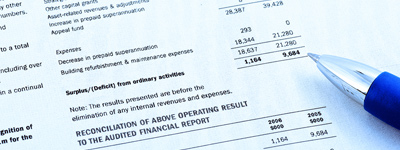As we approach the end of 2025, it’s time to evaluate your year-end tax planning strategies. One important decision is whether you’ll claim the standard deduction or itemize deductions. Thanks to recent changes under the One Big Beautiful Bill Act (OBBBA), this choice carries new weight and can significantly impact your year-end strategies.
What’s the Difference?
At its core, the decision to itemize deductions or not comes down to which will save you more tax. The standard deduction is a flat-dollar reduction to your taxable income based on your filing status. For 2025, the OBBBA makes permanent and slightly increases the nearly doubled standard deductions introduced by the Tax Cuts and Jobs Act (TCJA). These amounts will be adjusted annually for inflation.
Here are the 2025 standard deduction amounts under the OBBBA:
- $15,750 for single taxpayers and married individuals filing separately (up from $15,000 for 2025 before the OBBBA),
- $23,625 for heads of households (up from $22,500), and
- $31,500 for married couples filing jointly (up from $30,000)
Itemizing deductions involves tracking, documenting and reporting specific deductible expenses on Schedule A. Examples are mortgage interest, charitable contributions, medical expenses, and state and local taxes (SALT). But various rules and limits apply to each type of deduction.
If your itemized deductions exceed the standard deduction for your filing status, itemizing will lower your tax. However, fewer taxpayers have itemized deductions since the TCJA went into effect due to the combination of a higher standard deduction and the reduction or elimination of many itemized deductions.
That said, the OBBBA reintroduces opportunities that could cause itemizing to make sense once again for some taxpayers who’ve been claiming the standard deduction in recent years. And taxpayers who’ve benefited from itemizing over the last several years, such as those who make large charitable gifts each year, will likely continue to benefit.
What’s New for Itemized Deductions in 2025?
One of the most impactful itemized deduction changes for many taxpayers goes into effect this year. It’s an increased cap on SALT deduction.
Under the TCJA, the SALT deduction was limited to $10,000 ($5,000 for separate filers). Beginning in 2025, the OBBBA raises those limits to $40,000 and $20,000, respectively. The increased cap is reduced if a taxpayer’s modified adjusted gross income (MAGI) exceeds $500,000 ($250,000 for separate filers). The deduction is reduced by 30% of the amount over the threshold — but not below the original $10,000/$5,000 floor.
This change is especially meaningful for:
- High earners in locations with state income taxes, and
- Homeowners with large property tax bills or who pay property tax on both a primary residence and a second home, such as a personal vacation home.
For example, Tom is in the 35% tax bracket with $40,000 in deductible SALT expenses for 2025. He isn’t subject to the 30% reduction, so he could potentially save an additional $10,500 in taxes because of the higher SALT cap ($30,000 x 35%).
What’s New for Itemized Deductions in 2026?
Several significant changes to itemized deductions go into effect next year:
Slight expansion of the mortgage interest deduction. You generally can claim an itemized deduction for interest on mortgage debt incurred to purchase, build or improve your principal residence and a second residence. Points paid related to your principal residence also may be deductible.
The OBBBA makes permanent the TCJA’s reduction of the mortgage debt limit from $1 million to $750,000 for debt incurred after December 15, 2017 (from $500,000 to $375,000 for separate filers), with some limited exceptions. It also makes permanent the elimination of the home equity interest deduction for debt that wouldn’t qualify for the home mortgage interest deduction. Examples include home equity debt used to pay off credit cards or purchase vehicles.
But beginning in 2026, the OBBBA generally makes mortgage insurance premiums deductible as mortgage interest.
Changes to the charitable deduction. For 2025, charitable contributions are generally deductible for taxpayers who itemize. But for those claiming the standard deduction, there’s no federal income tax benefit for charitable donations this year.
Beginning in 2026, however, the OBBBA provides a small charitable deduction for nonitemizers. The deduction is for cash donations only, and it’s capped at $1,000 ($2,000 for joint filers). While limited, this is a welcome addition for donors who typically don’t benefit from itemizing.
Also starting in 2026, itemizers will face a new restriction: Charitable contributions will be deductible only to the extent they exceed 0.5% of the taxpayer’s adjusted gross income (AGI). For example, someone with $100,000 in AGI couldn’t deduct the first $500 of charitable gifts.
Permanent, slightly expanded personal casualty loss deduction. The OBBBA permanently limits the personal casualty and theft loss deduction. You can generally deduct losses only if they result from a federally declared disaster. So property damage from isolated events, such as a kitchen fire, burglary or backyard flood, typically won’t qualify.
However, if you experience a casualty gain — where insurance or reimbursements exceed your property’s adjusted basis — a portion of otherwise nondeductible losses may become deductible. Your tax advisor can help you assess whether a casualty loss deduction applies in your situation and how to properly report it.
There’s a small expansion coming in 2026: The OBBBA will also allow deductions for losses related to certain state-declared disasters. This may be especially important in areas prone to hurricanes, wildfires or other regionally declared emergencies.
New limit on gambling loss deduction. Currently, gambling losses are deductible up to the amount of gambling winnings for the year. Under the OBBBA, beginning in 2026, gambling losses will be deductible only up to 90% of gambling winnings. So if you have $10,000 in winnings and $10,000 in losses for 2026, you’ll be able to deduct only $9,000 of the losses — so $1,000 of the winnings will be taxable.
Permanent elimination of most miscellaneous itemized deductions. The OBBBA makes permanent the TCJA’s suspension of deductions for miscellaneous itemized expenses that had been subject to the 2% of AGI floor. Examples include certain professional fees, investment expenses and unreimbursed employee business expenses.
This effectively eliminates the home office deduction for employees who work from home (even if your employer requires it), because it’s considered an unreimbursed employee business expense. But if you’re self-employed, you may still be able to deduct home office expenses.
However, beginning in 2026, eligible educators will be able to claim a miscellaneous itemized deduction — not subject to the 2% of AGI floor — for eligible expenses. These may include books, supplies, computer equipment and other materials used in instructional activities.
New overall limit on itemized deductions. Beginning in 2026, the OBBBA will limit the benefit of itemized deductions for taxpayers in the top (37%) bracket. Effectively, their maximum tax benefit will be as if they were in the 35% tax bracket. So a $10,000 deduction will save them $3,500 in taxes rather than $3,700.
Additional Considerations Related to Deductions
One important itemized deduction we haven’t discussed yet is the medical expense deduction. The OBBBA didn’t make changes to this deduction, but it was already subject to a significant limit: You can deduct medical expenses only to the extent they exceed 7.5% of your AGI. This floor can be difficult for taxpayers to surpass.
Eligible expenses may include health insurance premiums, long-term care insurance premiums (limits apply), medical and dental services, prescription drugs, and miles driven for health care purposes (21 cents per mile for 2025). (Of course, you also can’t deduct medical expenses reimbursable by insurance or paid via tax-advantaged account, such as a Health Savings Account or a Flexible Spending Account.)
Another important consideration is the alternative minimum tax (AMT). You must pay the AMT if your AMT liability exceeds your regular income tax liability. Some deductions allowed under the regular tax system — particularly SALT — aren’t deductible under the AMT. So while the OBBBA’s increased SALT cap is welcome news for regular tax purposes, it may increase AMT risk for certain taxpayers. Some changes to the AMT exemptions that will go into effect in 2026 also could increase AMT risk.
Year-End Timing Strategies
To determine the best deduction strategy in 2025, look at not only your potential itemized deductions for 2025 but also those for 2026. Given the various changes noted above, do you expect to benefit from itemizing in both 2025 and 2026? In neither year? Or perhaps in one year but not the other? The timing of deductible expenses can make a noticeable difference in your overall tax bill. Here are some tips for various scenarios:
Tips for nonitemizers. There aren’t many year-end deduction strategies for nonitemizers, but here’s one to consider in 2025: If you expect to claim the standard deduction this year and next, you may want to wait to make any cash charitable donations until after December 31, 2025. That way, you can potentially deduct them on your 2026 income tax return.
Tips for itemizers. There are quite a few potential year-end deduction strategies for itemizers:
- If you’ve incurred enough medical expenses for the year to be close to or exceed the 7.5% floor, consider “bunching” additional medical expenses into 2025. For example, if you have flexibility in when to schedule elective procedures, refill prescriptions or pay premiums, consider doing it by December 31, 2025.
- If you have less than $40,000 in SALT expenses and income below the reduction threshold, you might be able to further reduce your 2025 tax liability by prepaying your 2026 property tax bill in 2025.
- If you typically donate more than $1,000 to charity each year ($2,000 for joint filers) but don’t always have enough itemized deductions to benefit from itemizing, consult your tax advisor. He or she can help evaluate whether a donation bunching strategy could save taxes while achieving your charitable goals.
- If you make large donations and have a high AGI, you may want to accelerate charitable giving into 2025, before the 0.5% floor on the charitable deduction takes effect.
- If you expect to be in the 37% tax bracket in 2026, consider accelerating deductible expenses into 2025. Doing so will maximize your tax benefit before the new limit on total itemized deductions goes into effect.
Also, be sure to consider your tax bracket. If you expect to be in a higher tax bracket in 2026 than in 2025, you might consider the following:
- Accelerate income into 2025 (such as bonuses, self-employment earnings or IRA distributions not subject to a penalty), when it may be taxed at a lower rate.
- Defer deductions into 2026, when they might offset income taxed at a higher rate.
On the other hand, if you expect to be in a lower bracket next year than this year, you may want to do the following:
- Defer income into 2026 to take advantage of the lower rate.
- Accelerate deductions into 2025, when they might save you more tax.
Finally, if you’re at risk of being subject to the AMT this year or next, coordinate regular tax and AMT strategies.
Personalized Guidance
Choosing between the standard deduction and itemizing is a strategic decision that can significantly impact your tax liability, especially with many OBBBA changes taking effect this year and next. The right decision depends on factors such as your income, location, deductible expenses and AMT exposure, as well as whether various timing strategies fit your goals. Meet with your tax advisor well before year-end to maximize deductions, avoid surprises and potentially save significant taxes.








